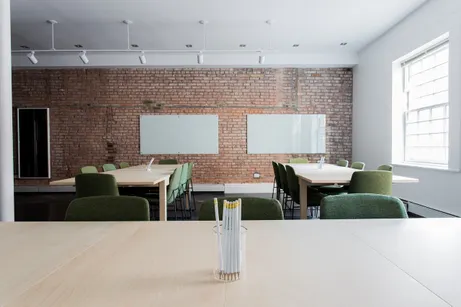
Is It Time To Have A Talk About Poor Ventilation Post COVID-19?
This article was previously published on Benzinga.
The average person takes more than 20,000 breaths per day. In fact, by the time they’re 50 years of age, they may have taken somewhere around 400 million breaths in their lifetime.
Breathing is essential, and indoor air quality (IAQ) really does matter.
Reportedly, the average commercial office building produces more than 39% of the world’s carbon emissions. That energy consumption may impair more than just the climate. Society spends most of its time indoors. And for the modern world, much of this time may be spent living with poor IAQ.
IAQ — A Serious Concern?
“Good IAQ is directly linked to higher productivity in the workplace, better mental focus and lowered rates of absenteeism in a professional setting,” according to clean air technology company, SinglePoint Inc (OTCQB: SING). As businesses welcome back employees, offices could benefit from improved IAQ.
With a more productive workforce, businesses make more money. By doubling down on airflow and ventilation, some companies might even see more than an 8% increase in productivity each year – which according to a recent Harvard study could convert to an average savings of $6,500 per person.
Students are returning to school for in-person learning. And hospitals want to continue providing safe, clean environments to patients and staff in places where hospital-acquired infections and occupational diseases frequently exist.
A Need to Redirect Focus?
Good IAQ is where volatile organic compounds (VOCs) are less likely to exist.
Most of the nation’s 5.9 million commercial buildings, including public schools, are 15 years old or older.
VOCs reportedly thrive in environments with high levels of indoor mold and humidity. They agitate the immune system and can eventually lead to worsened symptoms like allergies and even death. They’re created when organic chemicals emit gasses or linger in the air, and they are associated with an overall decrease in lung function, various cancers and other respiratory ailments like asthma, bronchitis and chronic inflammation.
Heating, ventilation and air conditioning (HVAC) systems play a significant role in how viruses are transmitted.
The National Center for Education Statistics points out that more than 130,900 school buildings across the U.S. do not have an adequate form of ventilation or HVAC. In fact, many of these schools have no cool air ventilation.
In many situations, COVID-19 brought to life the need for improved IAQ. Schools, in particular, might need new systems to clean up unhealthy air. Both the Trump and Biden administrations have worked to provide $190 billion to schools seeking upgrades, with $121 billion in funding explicitly allocated for air purification.
California is another example of an ongoing program for clean air in schools. The state currently has a needs assessment window that closes on April 8, 2022 at 5:00 pm in which non-public schools can apply for a portion of the more than $180 million awarded to the state as part of the American Rescue Plan. Notably, SinglePoint’s BOX Pure Air tops the list of possible vendor options for schools from the California Department of Education.
SinglePoint reports that it focuses on developing environmentally-friendly solutions that improve IAQ. The company’s subsidiary BOX Pure Air provides a commercial-grade benchmark product, AIRBOX™, which is a high-efficiency particulate-absorbing (HEPA)-certified air purifier produced in an EPA-registered manufacturing facility.
Depending on the model, it can provide up to 4,000 square feet of fresh air, with an airflow of 1,500 cubic feet per minute.
BOX Pure Air only uses Certified HEPA filtration – already found in public schools across the U.S. – and helps create clean, pollutant-free environments.
The IAQ market is expected to grow by $10.27 billion in 2025, with annual sales in this space increasing from $9.2 billion in 2020 to $9.9 billion by 2025 alone.
Other companies in this sector include AirIQ Inc. (OTCPK: AILQF), Armstrong World Industries Inc. (NYSE:AWI) and Global Industrial Co. (NYSE: GIC).
To learn more about SinglePoint Inc. and its list of subsidiaries, visit https://www.singlepoint.com and www.boxpureair.com.
This post contains sponsored advertising content. This content is for informational purposes only and is not intended to be investing advice.


